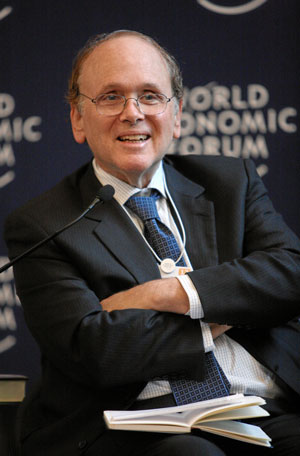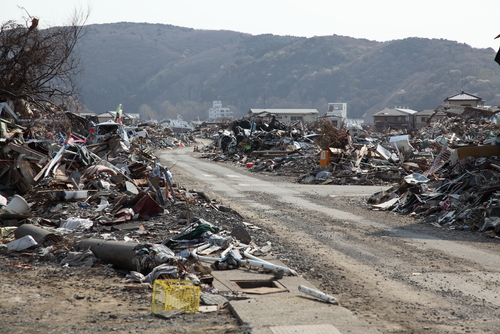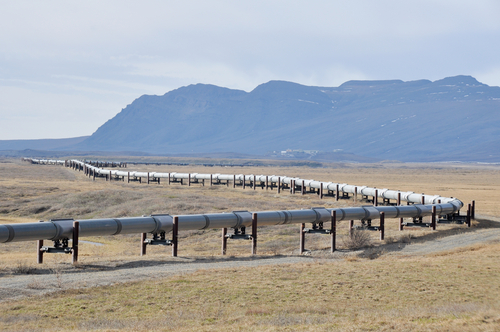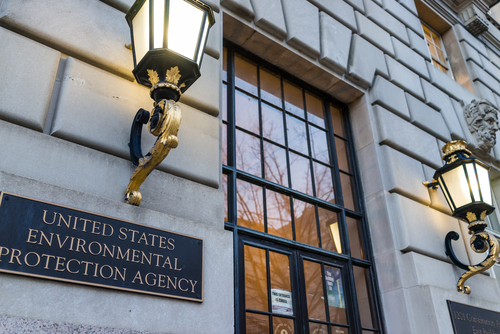President Donald Trump has offered relatively few details about what his energy strategy will be, but initial indications give some sense of how national priorities will shift. Early signals from the administration suggest a focus on easing regulations on hydrocarbon production, opening new areas to drilling, and accelerating permitting of infrastructure like pipelines. Regulations aimed at reducing greenhouse gas emissions, from the Clean Power Plan to fuel economy standards, seem likely to be reversed or eased. And the president has promised to “cancel” the Paris climate agreement. The president has labeled his energy plan “America First,” focused on lowering energy costs, boosting domestic production, and “freeing us from dependence on foreign oil.” Underlying these campaign commitments seems to be a view that letting markets work, and curtailing government regulations that intervene in free markets, will deliver optimal outcomes.
Specific policy promises do not add up to a strategy, of course. The Trump Administration still should do more than identify priorities. The administration, like any other, should develop a comprehensive energy strategy that identifies energy policy objectives and is clear about what problems it is trying to solve with government action. An energy policy ought not be prescriptive about how to achieve those objectives, but can rather recognize the power and ingenuity of markets to deliver those outcomes. That includes free and open integration of the U.S. into the global energy system. Yet such a strategy must then also be clear about how that administration defines and identifies market failures, and what government policies may be justified to correct them, such as internalizing social costs of pollution, boosting energy system resilience, and investing in research and development (R&D).
Developing a national energy plan along these lines can go a long way toward helping achieve the economic, national security, and environmental objectives at the heart of U.S. energy policy.
Development of a national energy strategy

In 2001, Edward Morse, a leading energy economist, chaired an independent task force that noted that the United States does not have an energy policy.
It has often been lamented that the United States does not have an “energy policy.” The assessment of an independent task force (chaired by Edward Morse, a leading energy economist) in 2001 rings as true today as it did 16 years ago: “The United States has not had a comprehensive, integrated strategic energy policy for decades.”
The 1977 law that created the Department of Energy required it “to provide for a mechanism through which a coordinated national energy policy can be formulated and implemented,” and to present to the U.S. Congress a “National Energy Policy Plan” every two years. Yet, such a plan was only developed sporadically in the years that followed, and no national energy strategy has been submitted to Congress pursuant to this language since 1998.
Energy policy has enormous economic, national security, and environmental consequences. Changes in price can tip economies into recession or bolster economic growth. Energy is a source of geopolitical influence, but also vulnerability, and can motivate both conflict and cooperation. Energy allows society to function—from food and medicine to transportation and communications—yet it can also despoil our air and water.
Part of the challenge with developing a national energy plan is the lack of agreement over what exactly “energy policy” is. Energy policy today is most often framed around the goals of affordability, access, reliability, and sustainability. But energy has economic, geopolitical, and environmental consequences that may be in conflict. Lower oil prices may boost the economy but encourage greater consumption, emissions, and import dependence. Encouraging more coal use (as President Jimmy Carter did) may help domestic producers and reduce import dependence but harm the environment. The list goes on.
As energy historian Daniel Yergin put it nearly four decades ago:
To frame an energy policy is to allocate large benefits and large costs and to distribute or redistribute income. The coexistence of both producers and consumers in very considerable abundance in the United States makes a definition of national interest quite difficult.

Energy historian Daniel Yergin articulated that it is difficult to frame energy policy because the United States has both large amounts of producers and consumers.
For this reason, the development of a national energy plan should be a priority for the incoming administration to define what problems it is trying to solve. An energy strategy can articulate priorities, define problems, and establish the framework and organizational process through which policy will be formulated.
That is important not only for external audiences but also internal ones as well, as the new administration develops its budget priorities and sets clear areas of responsibility between different agencies and White House offices. Consider that at least eight offices within the White House are involved in setting energy policy, with responsibility varying between them under different presidents. That matters because every White House policy office has different equities between energy’s economic, geopolitical, and environmental implications.
The power of markets
At the same time, a national energy policy should avoid being prescriptive or planning energy needs and fuel mix based on assumptions about the future. History has shown time and again that markets are the best organizing principle for our energy system, as neither the public nor private sector are able to anticipate new technologies, consumer preferences and behaviors, or unintended consequences.
As Yergin explains, “large, flexible, and well-functioning energy markets contribute to security by absorbing shocks and allowing supply and demand to respond more quickly and with much greater ingenuity than is possible within a controlled system.”
Consider ways in which markets have developed to create a more flexible and integrated oil and gas market. In the 1970s, oil price controls existed in the United States, and most internationally traded oil was sold under long-term contracts. A disruption in contracted shipments could result in a physical shortage for the buyer, because of the lack of strategic and commercial stockpiles or of a large spot market where buyers could easily access alternative sources of supply. In the intervening years, the oil market has become the world’s largest and most liquid commodity market, along with vibrant futures markets. This ultimately shifted control over the global oil price from producer governments to markets.
The recent lifting of the ban on U.S. oil exports allows markets to more efficiently determine what sort of crude to source and allows price signals to be passed through to producers more easily, so that U.S. supply can respond to supply and demand shifts around the world. This was evident in February 2017, when U.S. crude exports temporarily spiked to 1.2 million barrels per day as refineries went into maintenance and Asian crude supplies tightened following the Organization of the Petroleum Exporting Countries (OPEC) cuts. Rather than see a temporary dislocation between U.S. and world oil prices, as may have happened in the past, markets could adjust to these changed circumstances.
Similarly, the export of U.S. liquefied natural gas (LNG), indexed to a spot price and flexible as to its destination, is creating more competition and integration in global gas markets, reducing the geopolitical leverage of any one supplier over its customers. And increased liquidity in the global gas market is allowing price discovery based on gas-to-gas competition, helping supply and demand respond more efficiently to changes in the market.

When natural disasters strike, such as the earthquake and tsunami in Fukushima, Japan, there is less possibility for disruption in the energy system if it is open, interconnected, and interdependent.
The same is true in clean energy and across other areas of the energy landscape. Increased market competition among utilities and the use of market-based instruments like cap-and-trade have proven effective at achieving environmental aims at lower cost because of the flexibility they provide to consumers and producers to find innovative ways to reduce emissions, alter consumption patterns, or otherwise achieve environmental goals in ways top-down command- and-control regulation could not have anticipated.
Increased security and resilience of our energy system comes not from “energy independence,” but indeed from harnessing market forces to allow a more open, interconnected, interdependent, and competitive energy system. From Fukushima to Hurricane Katrina, nations are more secure in the face of supply disruptions when they are part of a highly integrated global energy market. That is why some seemingly protectionist rhetoric from the new administration— from the possibility of border tariffs and unraveling the North American Free Trade Agreement (NAFTA) to campaign calls to ban the import of Saudi oil and promises of “America First”—have raised concerns about possible impediments to energy trade.
Government’s role to correct market failures
This focus on making markets work better aligns well with the campaign rhetoric of the incoming administration. Yet it is only one side of an energy policy. The other side is to identify clearly and precisely specific market failures that justify government intervention. While free markets may be the best organizing principle for an economy, markets alone do not internalize social costs, achieve distributional aims, or provide public goods like education or defense.
In the case of energy, there are many market failures that must be addressed.
Markets alone do not curb pollution. Markets do not internalize the social cost of air pollution, water pollution, and carbon emissions. For example, the costs of pollution from a power plant, in terms of public health or the environment, are not borne by the operator of the power plant and thus are not passed on to electricity consumers. The full social costs, including these externalities, are greater than the private costs of the goods being consumed by the end users. Therefore, consumers and businesses will emit too much local pollution, like particulates, sulfur dioxide, and greenhouse gas emissions, since they do not bear the full cost to society of the emissions from their use and production of energy.
Markets do not deliver socially optimal levels of R&D. A long economics literature finds that private firms underinvest in R&D because they cannot capture the full social benefits of innovation, a problem that may be exacerbated in the clean energy context. As a result, private firms tend to focus on applied research with payoffs tied directly to their bottom line. The government, however, can fund basic research seeking broad-ranging scientific inquiry that can yield innovations like GPS or the Internet with broad benefits. This market failure justifies government investment in R&D.
Markets alone do not provide socially optimal levels of resilience. An individual refiner, for example, will not bear the cost of carrying extra inventories of gasoline or diesel, since it does not bear the cost of disruptions as seen during Hurricanes Sandy or Katrina, or more recently after outages to the Colonial Pipeline. The need for government to bolster resilience can be seen today in Europe as well, where the European Commission’s Energy Union plan calls for increased investments in pipeline reversals, interconnectors, and storage to enhance resilience to unexpected natural gas outages—but no private firm has the incentive to invest in additional capacity that is justified by security, not purely commercial benefits.

Markets cannot operate alone and need to work with government to balance energy policy. For example, governments are needed to secure transportation routes for energy such as the Trans-Alaska Oil Pipeline.
There are many other examples. Markets alone do not secure transport routes for oil and gas, ensure nonproliferation of nuclear energy materials, or protect against cybersecurity risks— whether in oil and gas or from an increasingly electrified, digitized, and interconnected clean energy system. Natural monopolies require government regulation, as seen in the power sector— although new technologies and business models make clear the system for pricing electricity needs to be updated. The list goes on.
Bridging the partisan divide
These are not, and should not be, partisan issues. Republicans have long recognized the need to internalize social costs. In the wake of widespread pollution problems following the rapid industrialization that followed World War II, President Richard Nixon in 1970 created the Environmental Protection Agency (EPA) and signed the National Environmental Policy Act and Clean Air Act, proclaiming the 1970s to be the “environmental decade.” In the 1980s, President Reagan’s EPA put in place a pioneering cap-and-trade system to phase out leaded gasoline at lower cost than through traditional command-and-control regulations by using markets. In 1989, President George H. W. Bush proposed the use of cap-and-trade to curb sulfur dioxide emissions from power plants and thus address the nation’s severe acid problem.

In 1970, President Richard Nixon created the Environmental Protection Agency to protect against pollution. Both parties have long recognized that the problem of pollution is suited to consistent federal standards.
Similarly, investment in energy R&D has long enjoyed broad support in both parties as a way to boost American competitiveness. Both Democrats and Republicans have called for entrepreneurship to address climate concerns, as seen in recent legislation proposed by the Senate Energy Committee, helmed by Republican Lisa Murkowski. The prior administration’s commitment to join 20 other nations in doubling energy R&D through Mission Innovation offers such an opportunity for bipartisan energy policy.
And a commitment to free and open energy markets and trade should be part of an administration’s energy strategy in either party—from President Carter’s and Reagan’s efforts to eliminate price controls to the permitting of LNG exports by the Obama Administration and removal of the ban on crude exports by a Republican-controlled Congress.
While there is disagreement, often along partisan lines, over whether environmental (as opposed to, say, national security) problems are best addressed through regulation at the state or federal level, both parties have long recognized that the problem of pollution is particularly suited to consistent federal standards. Indeed, part of the reason the EPA was created was because state competition to attract industrial development often led to a regulatory race to the bottom, and pollution does not abide by state borders.
Conclusion
The new Trump Administration should develop a national energy strategy to provide direction both internally and externally about how it defines the problems energy policy should solve. Rather than be prescriptive about how to achieve those objectives, a strategy that embraces the power of markets can afford flexibility and creativity to deliver technological solutions or affect consumer and business behavior in ways the government likely could not have anticipated. An efficient and well-functioning market includes integration into a global energy system that fosters increased security, competition, and flexibility. At the same time, however, such a market- based approach must be coupled with a thorough identification of market failures and a robust set of well-defined government interventions to correct them, such as internalizing social costs of pollution, protecting our energy system from physical and cyber threats, boosting resilience to unexpected outages, investing in R&D, and more.